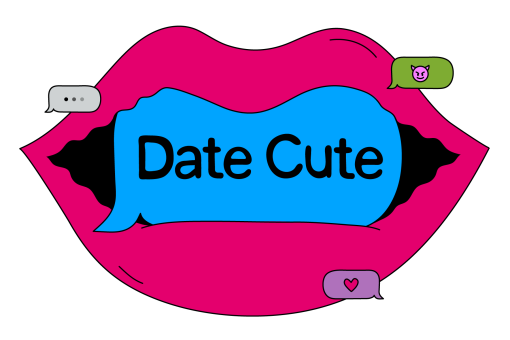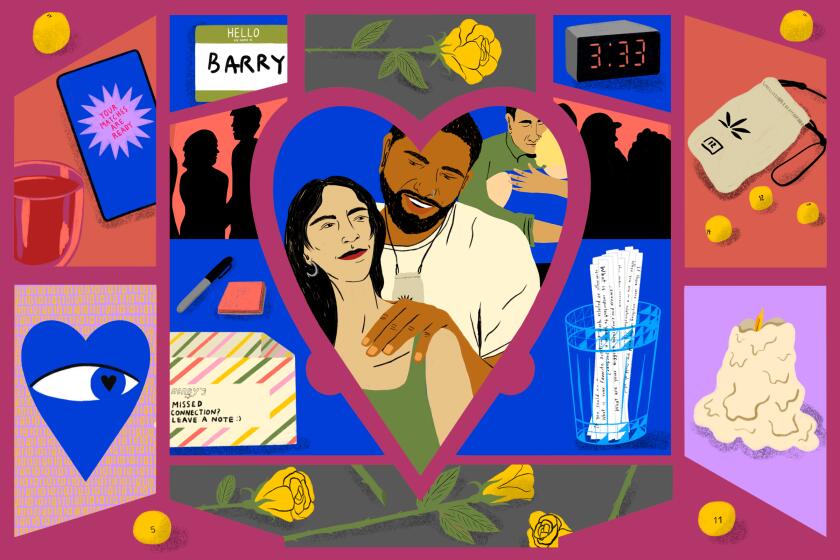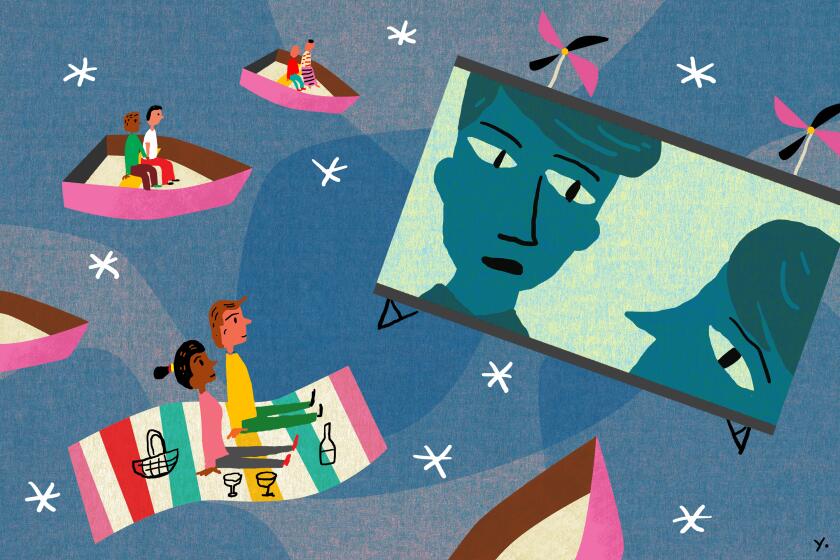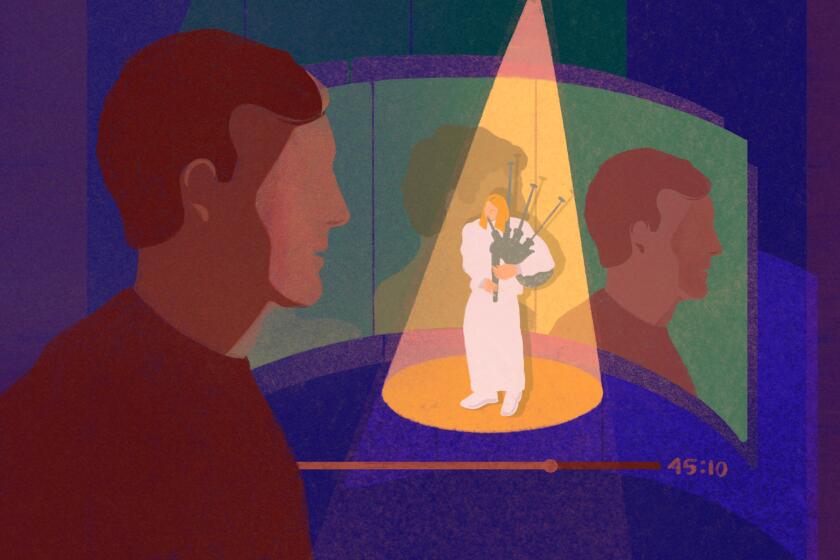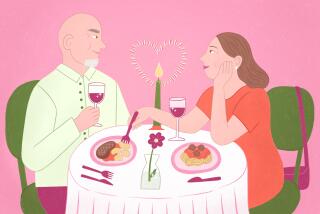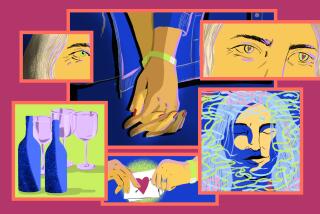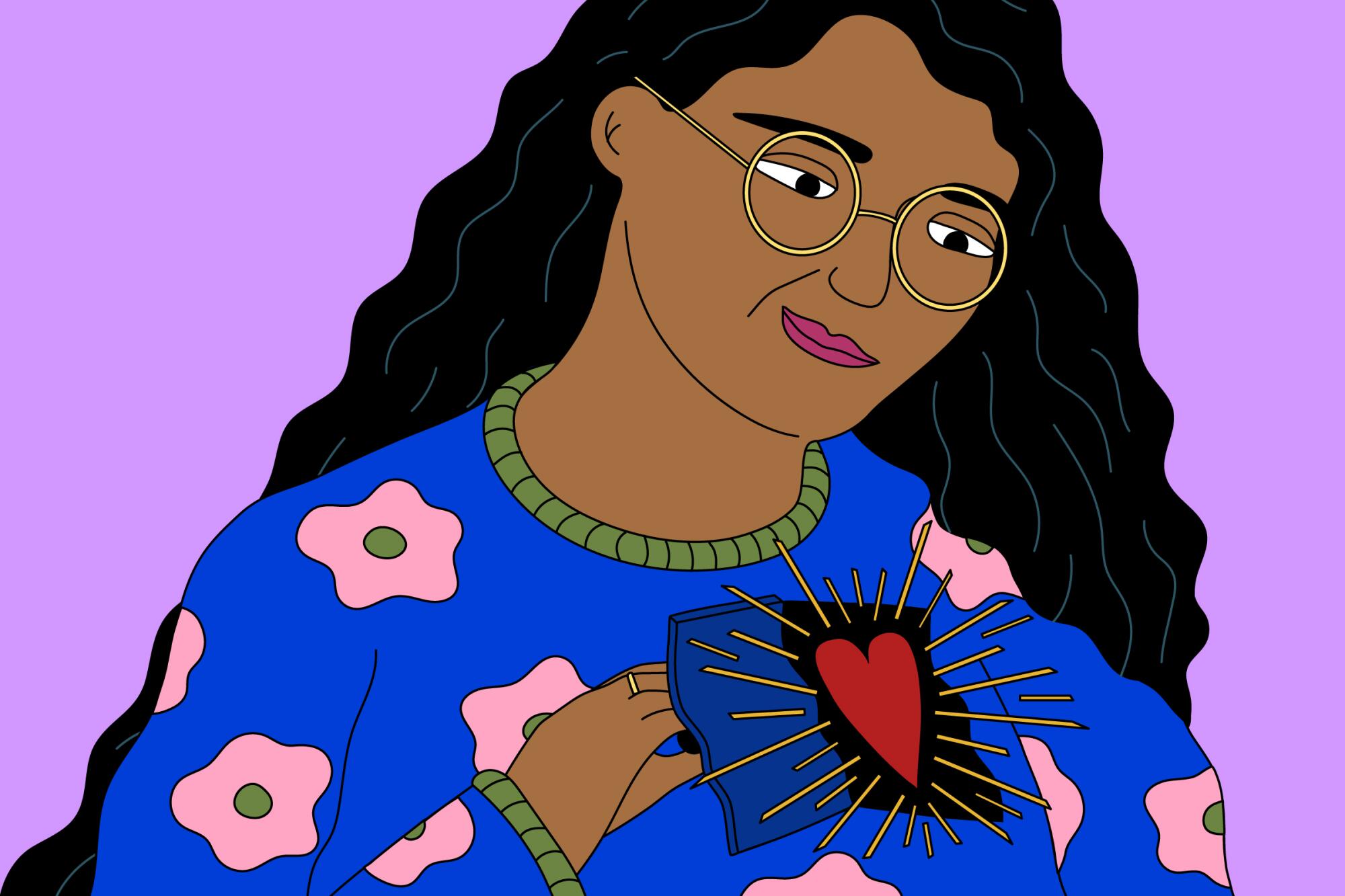
In a TikTok that has been viewed nearly 1 million times, a woman explains that her husband’s approach to calming down after an argument is “by being in my skin, attached to me like a bug on a rug.”
As someone with an avoidant attachment style, it’s the exact opposite of how she handles conflict, she says. While she tends to shut down and needs alone time to process her feelings, her husband, who has an anxious attachment style, likes to address issues immediately and needs extra assurance from her.
Dating in Los Angeles can be messy. In “Date Cute” we’ll explore common dating problems and provide tips on how to date better.
The woman goes on to explain how she and her husband navigate quarrels despite their conflicting attachment styles, a hot-button topic on TikTok and beyond. First developed by psychologist John Bowlby in the late 1950s after he studied how infants reacted when separated from their primary caregivers, attachment theory analyzes the way people bond with others.
What’s most compelling about the 58-second TikTok isn’t the practical advice but rather the comment section.
“Avoidants need to stay out of relationships,” one person commented, adding that people with avoidant attachment styles are damaged goods.
Another person wrote, “Nah idk why I always need to accommodate to the avoidant for them to just leave me for my style.”
“a lil bit of therapy won’t hurt you I think, he needs to be more confident about himself,” commented another.
It’s something that Jeff Guenther, a licensed professional counselor who posts relationship advice on social media under the handle Therapy Jeff, often sees in the comments on his videos about attachment theory.
“The comment section is out of control,” says the L.A. native, who’s currently based in Portland, Ore. “There’s usually a lot of anxiously attached people talking about their anxiety and how much they want to connect, and all of the avoidants aren’t commenting ... they’re avoiding.”
As online dating continues to ebb and flow, and people are no longer isolated due to COVID-19 restrictions, those who once had zero interest in speed dating are trying it.
Though there’s contention between anxious and avoidant daters, who both fall under the insecure umbrella, neither is inherently good or bad, says Junie Abito, an L.A.-based licensed marriage and family therapist.
“I know a lot of avoidant attached people that live happy lives with their partner,” says Abito, adding that she has an anxious attachment style and is married to someone who’s avoidant.
While it’s commonplace for people to attack avoidants on social media, Amir Levine, co-author of the 2010 book “Attached,” which helped propel attachment theory’s recent rise, says we aren’t stuck being one style over another for the rest of our lives.
“It’s more like the beginning of a conversation about how to improve relationships and how to find alignment between people.”
— Amir Levine, a clinical psychiatrist and neuroscientist at Columbia University, and co-author of the 2010 book “Attached,” on how attachment styles can change
“There’s only a weak correlation between your attachment style as a child and your attachment style as an adult,” says Levine, a clinical psychiatrist and neuroscientist at Columbia University, adding that during adolescence the brain is still developing and is most malleable. But as we grow older and we start to rely less on our caretakers and more on our peers, the way we connect with others can evolve. Our experiences with other people also can have an impact.
For this reason, Levine says, attachment styles aren’t set in stone: “It’s more like the beginning of a conversation about how to improve relationships and how to find alignment between people.” Knowing what the styles are can help people become more secure daters intuitively, adds Levine, who’s currently working on another book about becoming secure in all relationships, not just romantic.
The benefit of becoming a more secure dater is experiencing “love in a way that doesn’t make you a chaotic mess” and healthy relationships, says Kirstie Taylor, who shares advice for anxious daters on TikTok and Instagram.
So whether you lean more to the anxious or avoidant side of the spectrum, relationship experts say there’s hope for everyone to become more secure in their dating lives. Here’s how you can do it.
Identify your attachment style
The first step to becoming a secure dater is figuring out what drives how you act in relationships.
“You have to know your s—,” says Abito. “What it is that irks you, what it is that makes you feel the worst. You have to know your stuff. Your self-awareness is truly what is going to allow you to date smarter [and] more confidently.”
Most people fall into three buckets: anxious, avoidant and secure. There’s also a less common style, fearful-avoidant (a.k.a. disorganized attachment). Securely attached people are reliable, can effectively communicate their boundaries and don’t shy away from intimacy and difficult conversations. Those with an avoidant attachment style tend to avoid vulnerability for fear of getting too close to others, and they prefer to deal with their feelings in private. Anxious people fear rejection and abandonment, and may come off as clingy or needy. A fearful avoidant — a combination of anxious and avoidant — desperately wants to connect but finds ways to push their partner away due to mistrust.
There’s a multitude of web quizzes, including the 18-question test that Levine created with his co-author, Rachel Heller, that you can take online to find out your attachment style. You can also talk to a licensed therapist or determine it yourself by taking a look at how you handle conflict in your everyday life.
Tired of the standard dinner-and-drinks first date? Try one of these refreshing ideas that are bound to make a lasting impression.
“Think back to a time when you had a difficult interaction with a friend,” says Abito. “How did you manage that?” An avoidant may be passive about the situation or let things go easily, whereas someone who’s anxious may be more sensitive. Abito says you can also reflect on how you perceived your caregivers when you were a child and how you perceive your relationship with them now.
Once you’ve figured out which bucket you fall into, don’t judge yourself.
“Don’t feel shame,” Guenther says, adding that no one chooses their attachment style because it’s formed in childhood. “Don’t let those anxious babes make you feel bad about your [avoidant] attachment style.”
He adds, “If we learn how to communicate our needs while owning it, then we can find somebody who can actually be there and give us more validation or give us more space.”
Dig deeper and research
Once you know your attachment style, you can pay attention to how it shows up in your dating life.
For anxious daters, Guenther says to figure out when anxiety manifests inside of you. Is it when the person you’re dating takes hours to text back? Or does it happen when they don’t follow up after a date? Some questions you can ask yourself are: “Why am I getting triggered? What’s happening to my brain when anxiety hijacks it? Can I tolerate this feeling without urgently acting on it?”
In those moments when you feel anxious, Abito suggests stepping away from your phone — the thing that’s triggering you most.
Because if you don’t take a break from frantically checking your phone, “It’s going to be really hard for you to get to the place of finally controlling your nervous system,” she says. Once you’ve done that, then you can do a grounding exercise like breathing deeply or going on a walk, to avoid acting on impulse or mentally spiraling.
“An avoidant person often doesn’t know when their nervous system is ignited. It might be their heart is beating fast. It might be their hands are getting clammy. Then they have to take a break. They have to physically say, ‘I’m shutting down right now, I need a moment,’ and then come back.”
— Junie Abito, an L.A.-based licensed marriage and family therapist
While an anxious person is typically hyper-aware of their feelings, avoidants tend to suppress their emotions and don’t know how to manage them.
“An avoidant person often doesn’t know when their nervous system is ignited,” says Abito, so they need to figure out their triggers and what happens in their body before they stonewall and shut down. “It might be their heart is beating fast. It might be their hands are getting clammy. Then they have to take a break. They have to physically say, ‘I’m shutting down right now, I need a moment,’ and then come back.”
All daters may find meditating on their experiences helpful, says Taylor, who’s the author of “What I Wish I Knew About Love.”
“After a date, you can write about how you felt or you can do a monthly reflection,” she says. Some questions you can ponder are “How’s my dating life been?” “Were there any big events that arose, like someone letting me know that they didn’t want to date me anymore, and how did I handle that?”
She adds, “Ideally, you would get to the root of, ‘What are the fears that I have around dating and how can I challenge those, and how can I create habits that start to help me become secure.’”
Communicate your needs
The next step is to clearly communicate your needs and how you’re feeling to the person you’re dating — even if it gives you the ick.
Because these behaviors are so ingrained, it can be difficult to know when you’re triggering someone else or vice versa if you aren’t upfront about it. So before writing that person off, Abito says you should ask yourself whether you’ve honestly communicated your needs and expectations.
I found out that my ex was putting on a show in which she’d talk about her romantic history. I was nervous about it and reached out to her.
You have to be courageous enough to tell the person that you don’t like their behavior, then give them a chance to meet you halfway, she says.
The main difference between having a secure versus an insecure partner is that if an issue arises, a secure person will ask necessary questions like, “What do we need to do together in order to meet all of our needs or compromise? How does our relational system need to change in order for us to be happy?” Guenther says. Whereas an insecure person will respond by telling their partner, “This is how you meet my needs and good luck with yours.”
Give yourself grace
You won’t become a secure dater overnight. It takes time and practice to reflect and reconfigure your behaviors. In the meantime, use what you know about your attachment style to help you find more suitable partners who will give you what you need in a relationship, says Abito. And don’t forget to give yourself an ample amount of grace.
“Utilize your attachment style in your favor,” she says. “Use it as a tool to date more confidently, to date less chaotically [and] to date with intention.” Because when you meet the right person, she adds, “You’ll be loved and accepted for who you are, not because you’re this or that attachment style.”
More to Read
Sign up for The Wild
We’ll help you find the best places to hike, bike and run, as well as the perfect silent spots for meditation and yoga.
You may occasionally receive promotional content from the Los Angeles Times.

